| | 2022-5-14
伦敦大英博物馆里,收藏有叁件德化窑白釉茶壶,加上伦敦维多利亚博物馆里的七件,也差不多是十件。
大英博物馆藏的介绍中说:
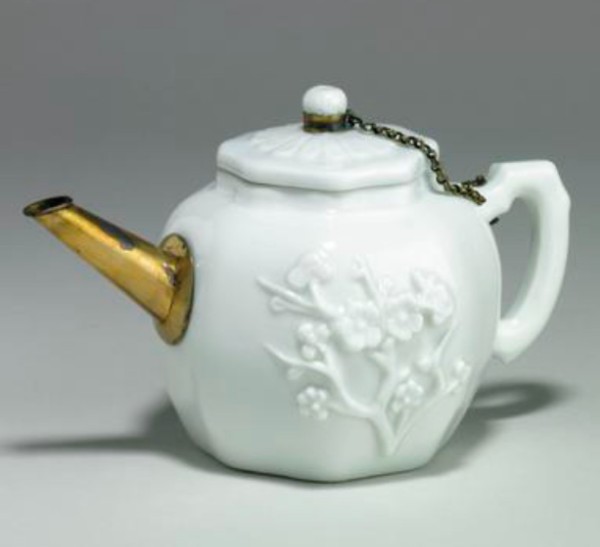
This mass-produced teapot was molded into an eight-lobed form and the spout, handle, cover, and decoration was applied with dilute clay having been made in individual smaller molds. Added in Europe, the gilt metal chain secures the cover reducing the risk of breakage, and the metal spout, which replaced the broken porcelain original, may have actually improved the pouring of the tea. 1. The pure-white sugary porcelain fabric of the teapot is typical of the Dehua kilns and is known in the West by the 19th-century French connoisseur's term Blanc de Chine. The pure whiteness of these ceramics is due to the relative absence of iron impurities in the body - indeed the clay used contains only half a percent of ferric oxide compared with 9% percent in a contemporary Yixing example. Body and glaze fuse perfectly in the firing.
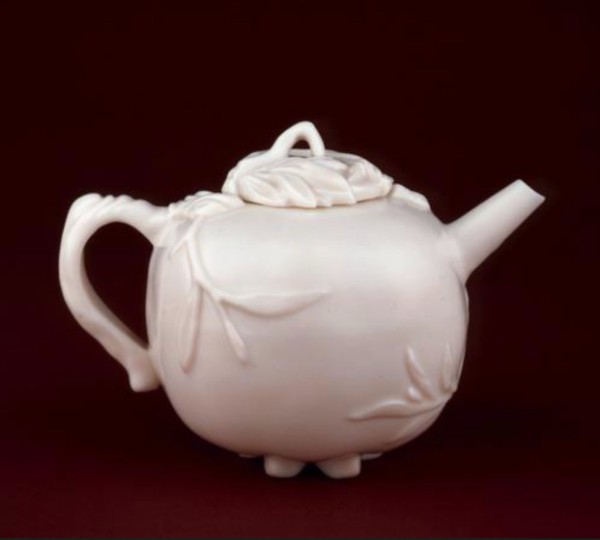
清白釉贴塑卷枝纹茶壶
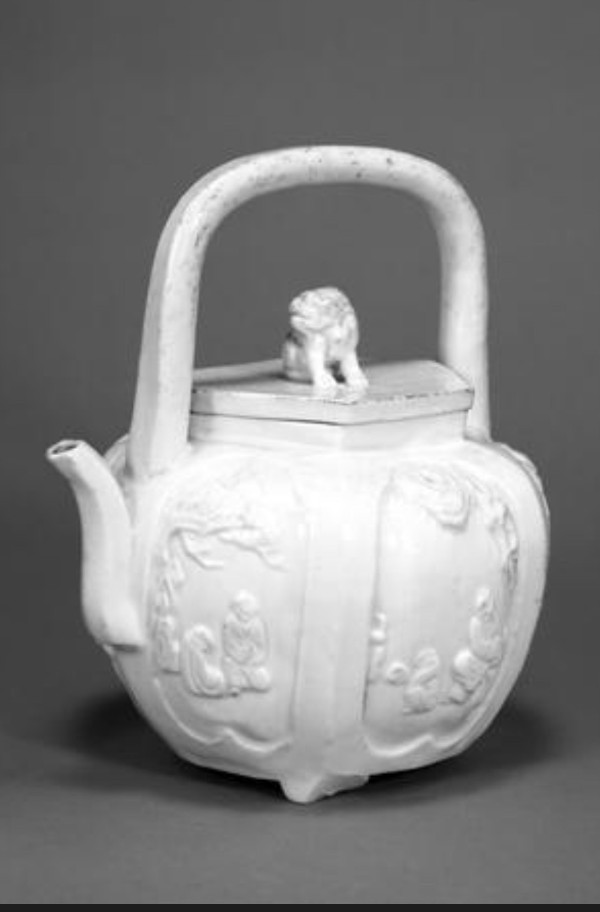
清1651-1700德化窑白釉茶壶 - Sir Augustus Wollaston Franks(1826-1897)旧藏
Born in Geneva, Switzerland. Franks's long career at the British Museum began in 1851 with his appointment as an assistant in the Department of Antiquities. He went on to serve as the Museum's first Keeper of British and Medieval Antiquities and Ethnography (1866-1896). He greatly enriched the Museum's holdings through careful acquisition and the donation of his own vast and valuable collections. Franks died in London and is buried in Kensal Green cemetery. The monument above the grave has achieved Grade II Listing. Franks was also one of the Trustees of the Christy Collection and associated Christy Fund, which from the late 1860s made major contributions to the development of the Museum's ethnographic and archaeological collections. As a Trustee of the Christy Collection, Franks often used both the Christy Fund and his own money to acquire objects which were later presented to the British Museum. Franks' numerous donations to the Museum included a group of portraits registered 1895,0420.1 to 251. His bequest included 70,000 items of printed ephemera including over 50,000 bookplates (block registered under 1897,1231 - see User's Guide to the Department of Prints and Drawings), trade cards (integrated into the Banks collection; as they are identified by the Banks location number that has usually been kept as a registration number, although a small group was registered with 1983, U numbers), other printed ephemera (kept separately from the Banks collection, but with ephemera from other sources) and miscellaneous prints of various kinds. Each group of objects has its own form of the registration number.
英国维多利亚博物馆中收藏有216件德化白瓷,其中的每一件白釉茶壶都考证详细,流传有序,并记录在桉。
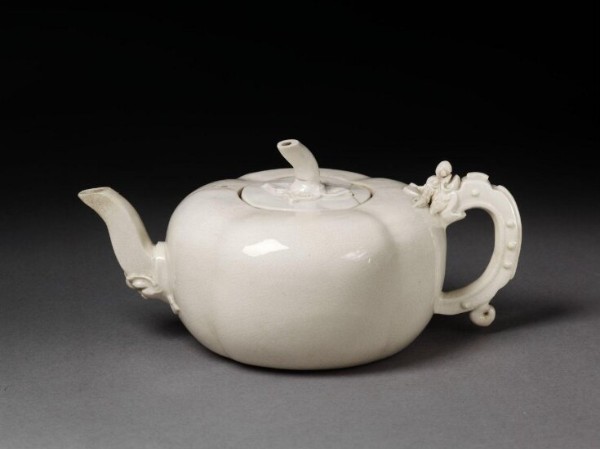
明末清初(1620-1720)德化窑南瓜形白釉茶壶 - Dehua ware. Teapot and cover, brown stoneware covered with a crackled glaze over a white slip, China.
Teapot and cover of brown stoneware, covered with a crackled glaze over a white slip. The body is in the form of a pumpkin, the stalk of which forms the handle of the cover. The curved four-sided spout springs from a monster's jaw, and the loop handle is in the form of a conventional dragon. The vendor is a missionary in an American mission in China and obtained this teapot at the village of Foi-Tsai near Swatow together with the other specimens already obtained from him: C.185, 186, 230-1912 and C.9-1913.
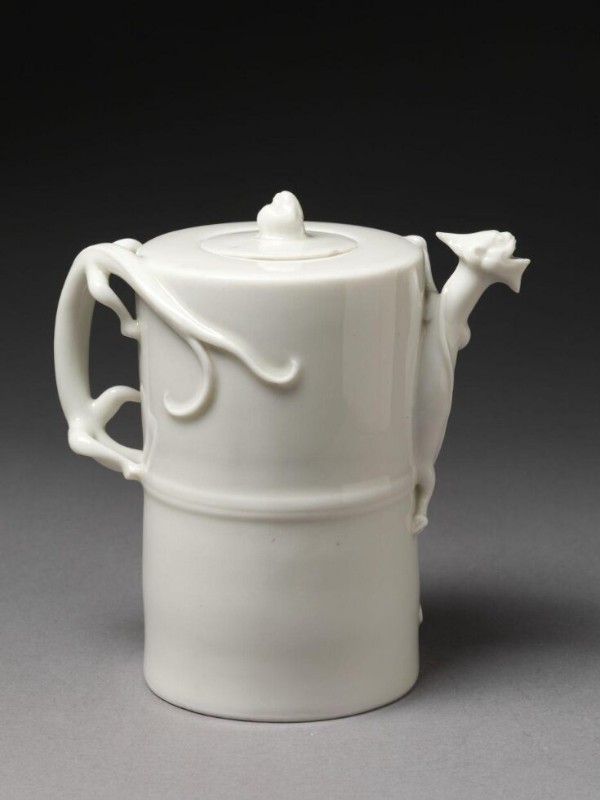
明末清初(1630-1660)德化窑蟠龙白釉酒壶 - Wine pot and lid, of glazed white porcelain with decoration in relief. Wine pot with a cylindrical body, the handle and spout each in the form of an archaic dragon. Knob in the form of a small dragon.

清早期(1620-1720)德化窑白釉蟠龙酒壶 - Dehua ware. Porcelain wine pot with wooden lid and stand, China
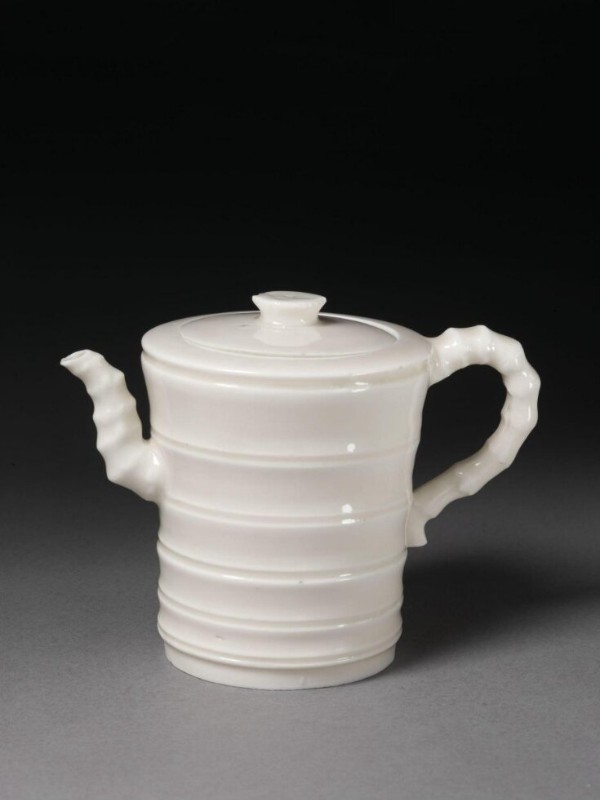
清(1650-1720)德化窑竹节形白釉茶壶 - Dehua ware wine pot and lid, in form of bamboo, of porcelain with ivory-white glaze.
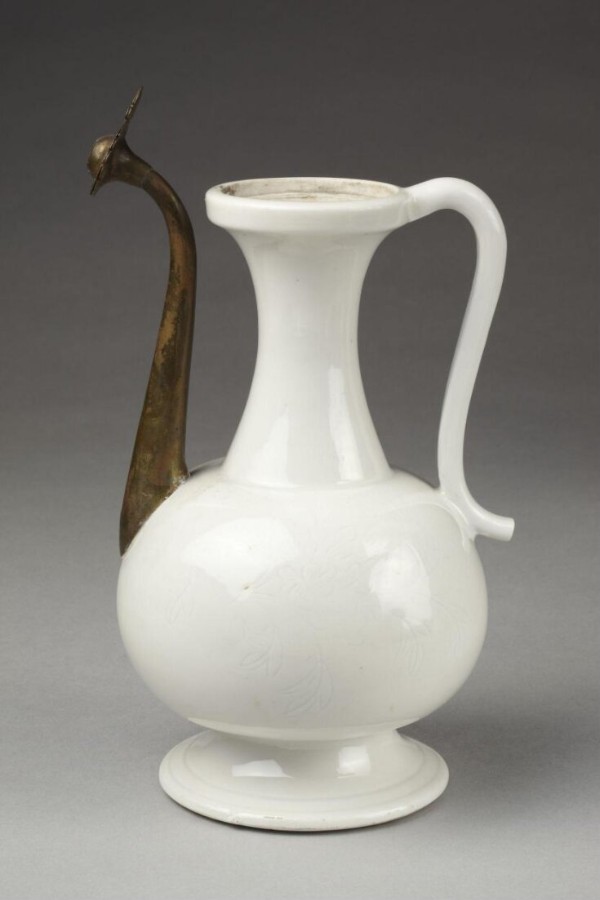
明末清初(1580-1650)德化窑白釉执壶 - Dehua ware ewer of white-glazed porcelain, with replacement metal spout. The body is incised with flowers.
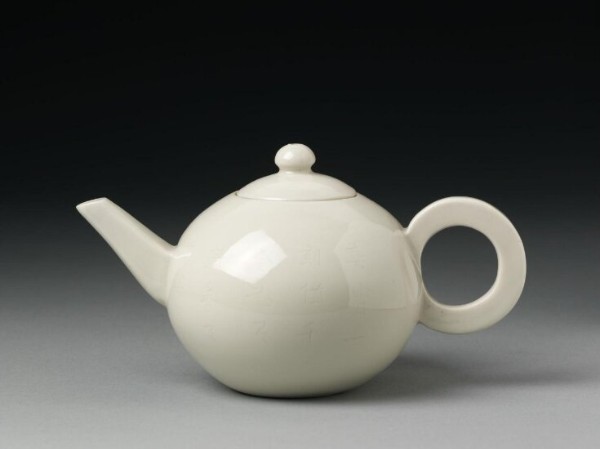
This teapot was made at Dehua, of white porcelain known as 'blanc de Chine in the west. One side is very subtly incised with a design of rocks and plants, and the other with a poetic couplet that reads: 'At night in springtime one moment is precious like a thousand pieces of gold, the orchid sends forth its fragrance in the shade of the moon.' These are the first two lines from a poem by the famous eleventh-century writer Su Shi. It might be assumed from this that the teapot had been commissioned by a scholar. However, Chinese scholars traditionally preferred the 'purple sand' teapots from Yixing, not the white ones from Dehua. Examples in Dehua porcelain were probably made after the kilns diversified into tea-ware production, following demands from European merchants for European shapes. Dehua wares were closely copied at European porcelain factories, notably Meissen, Chantilly, and Bow. Ceramic historians argue that Dehua's raw materials are superior to those of Jingdezhen, but the kilns had no access to water transportation and until the arrival of European merchants most of its productions were sold locally. The base is inscribed with the name of Emperor Xuande, who reigned from 1426 to 1435, more than 250 years before the teapot was made. The use of earlier reign marks has a long history in China, much t the vexation of modern researchers, and was intended to indicate respect rather than to deceive. The teapot's bold geometric design anticipates the forms of European modernism for more than two centuries.
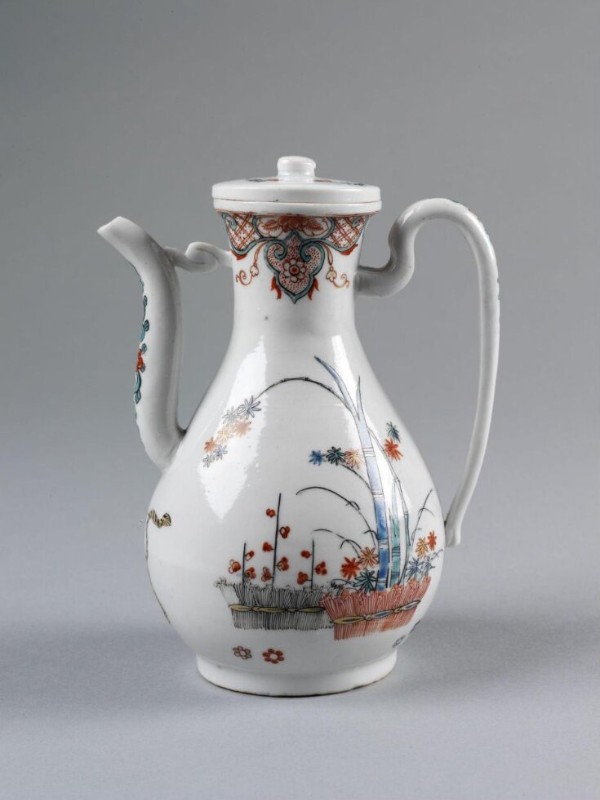
1680-1672年清荷合作德化窑白釉加彩奶杯 - This ewer was made in Fujian, South China. Originally of white porcelain, it was decorated in colored enamels after its arrival in the Netherlands.
中英美博物馆叁分天下,有这叁十把德化窑白釉茶壶做底子,基本上就可以包打天下了。不过在维多利亚博物馆里,也收藏有伊朗和法国人彷制的德化窑,既可以假乱真:
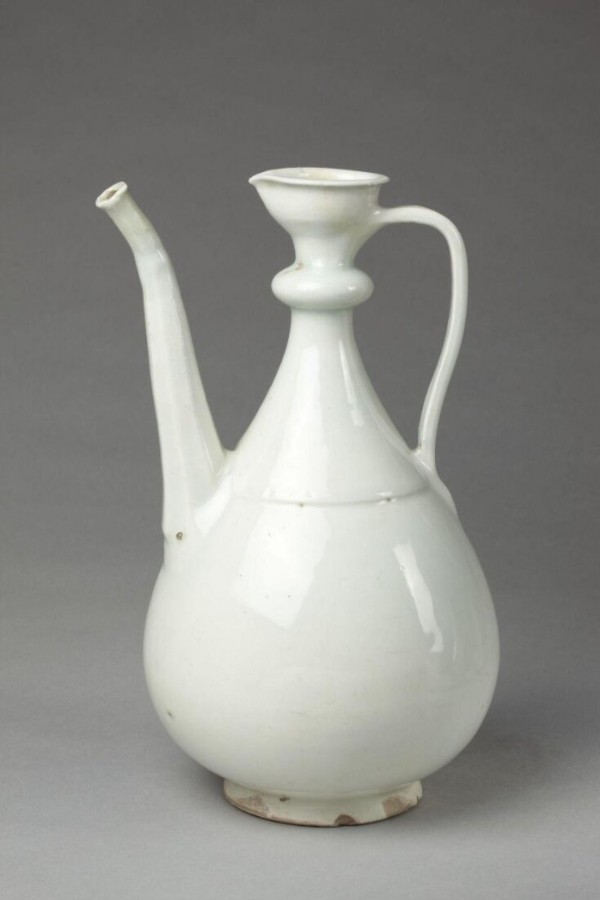
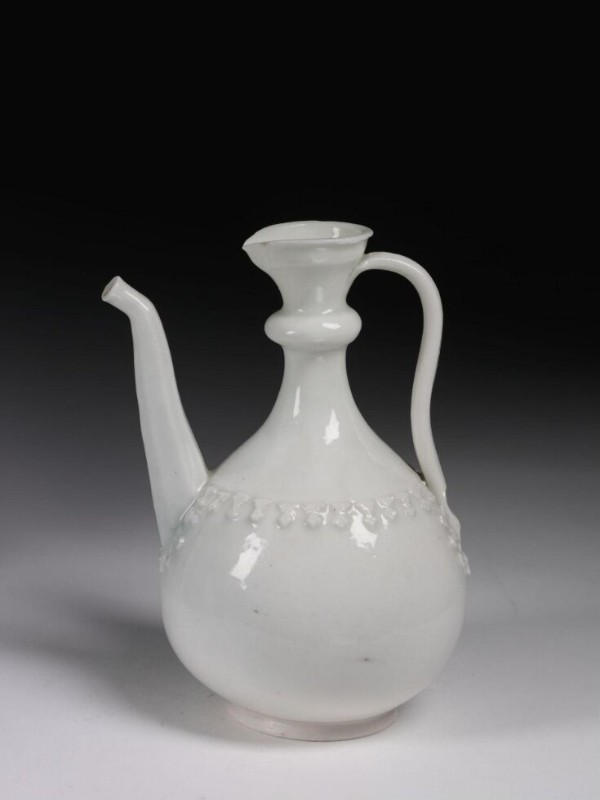
Iranian white wares, such as this ewer, found their way into European cabinets of curiosities through travelers, merchants, and agents of the Dutch East India Company. An inventory of the collection of Philippe, duc d'Orléans, Regent of France (1674-1723), dated 1723, lists rare ‘porcelaine blanche de Perse’, which may have been inherited from his father, Louis XIV. Other examples were in the Royal collection at Dresden, identified as Chinese porcelain in the 1779 inventory, as well as elite households in The Netherlands. Although made of crushed quartz, white clay, and frit (powdered glass ), the last ingredient added to lower the firing temperature, these plain frit wares resembled true white Chinese porcelain imported from Dehua at the same time. The shapes, however, are different and are specific to Iranian customs, including ewers, small dishes, wine cups, rosewater sprinklers, and water-pipe bases for smoking tobacco. Dutch East India Company agents referred to Iranian ceramics exported through Bandar-e Abbas, as ‘Gomron’ or ‘Gombroon’ ware, a reference to this main trading port on the Persian Gulf, then known to Europeans as “Gombroon”.
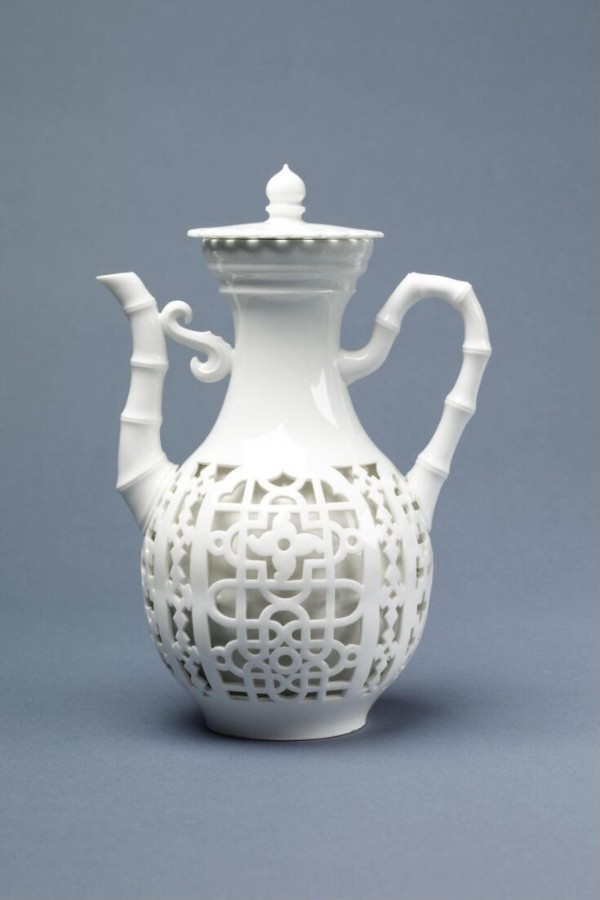
This Sèvres porcelain coffee pot was inspired by pierced double-walled Chinese ceramics with pierced decoration sold in Paris in 1826. The factory paid the designer Hyacinthe Régnier for drawings and working models to make a coffee service with pierced decoration, known as the ‘Cafetière Chinoise Réticulée’, in 1831-1832. The vessels were very complicated to make, each item being constructed from several component parts that were then luted together. The inner vessel was thrown on a wheel, and the outer layer was formed in a plaster mold, the mold being cut with guiding lines for the specialist craftsman who did the pierced work to follow. The factory’s manager, Alexandre Brongniart, was very proud of this considerable technical achievement, and he illustrated the process in his Treatise of 1844. Many services of this design were made for royal orders and gifts. Interestingly, given its Chinese inspiration, a set of this design was delivered to a ship’s captain in 1842 with instructions that it was to be exchanged for Chinese porcelain, though in the event this did not happen. The Meissen, Doccia, and Worcester porcelain factories had earlier made double-walled vessels inspired by pierced wares from Jingdezhen, Dehua, and Yixing, as had the Nottingham stoneware potter James Morley, who used the unusual and demanding technique of throwing his double-walled mugs from a single piece of clay.
|
